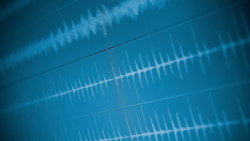Audio noise break-through from the UHF band (i.e. 300MHz - 3GHz)
22 Apr 2025
By Keith Armstrong, www.cherryclough.com, 14 April 2025
The electronic world changes very quickly indeed, but textbooks and academic courses struggle to keep up – so – most engineers have to deal with EMI/EMC problems they were never taught about.
For example, since 2000 the volume of wireless communications in the UHF band has hugely increased. Unfortunately, at UHF there are very many design issues that affect:
a) RF resonances; and,
b) How the RF gets demodulated and intermodulated in opamps and other semiconductor devices, causing ‘baseband’ noises at audio frequencies.
In particular: the types of mechanical structures and PCBs we create, and the spaces enclosed within them, can interact strongly with electromagnetic propagation at UHF. All the components, PCBs, structural elements, etc., start to behave as radio antennas!
Relevant mechanical and electronic design issues include:
- The internal designs of opamps and other ICs;
- PCB layouts and stack-ups;
- Wired / cabled interconnections;
- Enclosures, supports, and other physical structures, including the exact materials used (e.g. what types of plastics, rubbers, metals, etc.);
At UHF, any of the above can interact with others to create very complex and unpredictable situations. However, there is a well-proven effective practical design solution, which can be summarised as follows:
“Minimise structural resonances; and reduce the exposure of any opamps and other audio-frequency devices to frequencies outside their range of linear operation”.
The first part of this solution could use bench-top experiments with low-cost near-field probing techniques, see: https://www.emcstandards.co.uk/close-field-testing-for-every-project-stage.
Alternatively, use a 3D EM Field Solver such as available from Ansoft, CST, Keytek, and others, to help us design non-resonant mechanical and PCB structures. Andy Degraeve is expert in this: https://www.cherryclough.com/associateandy.
But field-solving is often not enough on its own, because it is usually too costly to design the structure alone to keep all UHF noises out of the non-linear ranges of the opamps and other audio-frequency devices.
The non-linearities inherent in all opamps and other semiconductor devices will create demodulation and/or intermodulation, and either can cause noise in the audio frequency range. This is especially a problem for demanding applications, such as military pilot headsets / helmets.
But opamp data sheets ignore their non-linear characteristics, making it difficult to design them to operate only within their linear ranges!
However, analogue signals only need a limited range of frequencies, usually within the range from DC offsets to 100kHz – so we should design analogue signal processing circuits to:
a) Behave linearly up to at least the highest frequency that we need for the application; and,
b) Not experience significant amounts of voltage or current noises at frequencies above the highest frequency we need (e.g. by using filtering and shielding on their PCBs).
The above techniques are described in detail in my training course: https://www.emcstandards.co.uk/emc-design-techniques-for-low-frequency-analogu, the coursenotes for which can be downloaded in PDF from: https://www.emcstandards.co.uk/analogue-design-techniques-for-sn-snr-and-imm.
(Sorry, but it is not yet available as a video training course from my Fedevel shop: https://fedevel.com/instructors/keith-armstrong#courses.)
Recently, some AI techniques have started to become available for electronic design, and I know at least one university that is actively developing such techniques. But I don’t yet know of any that are practical and useful for this type of EMC design issue.
Has this helped expand your understanding of EMC and safety?
Meet the people who can supply whatever you need to deal with this issue quickly and cost-effectively: knowledge; components; EM simulators; EMC testers / testing, etc., at EMC & CI 2025, being held on 19-21 May in the beautiful and vibrant City of Oxford, UK: www.emcandci.com.
Please use my personal 30% Discount Code: EMCSTANDARDS30, when booking on-line.
Get more from EMC Standards
EMC Standards is a world-leading resource for all things EMC and EMI related. Our website is packed full of both free and paid-for content, including:
- Online quiz
- Webinars
- Training quiz
- And much more!

Electromagnetic Engineering (EMgineering) is the basis for proven good design practices for signal integrity (SI), power integrity (PI), and the control of EMI emissions and immunity (EMC).
Our aim is to help people learn how to more quickly and cost-effectively design and manufacture electronic equipment (products, systems, installations, etc.) to meet functional (i.e. SI/PI) specifications and conform to EMC standards, directives and other requirements.
Such equipment should benefit from reduced warranty costs and financial risks, whilst improving uptime, competitiveness and profitability.
We also cover basic good electrical safety engineering; and the Risk Management of Electromagnetic Disturbances / EMI, whether for Functional Safety or other types of risk.
Join EMC standards TODAY!
